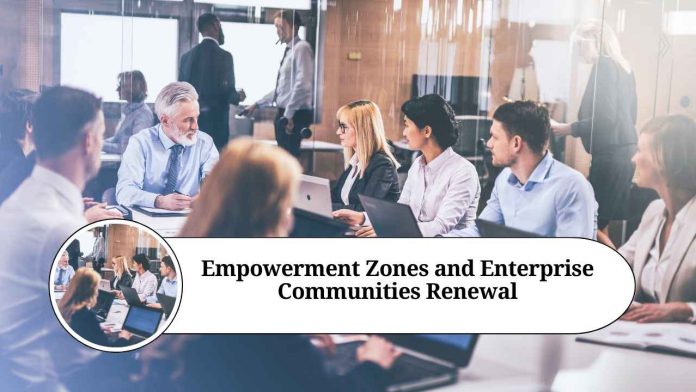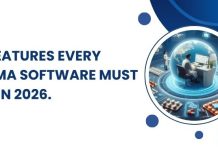Introduction
In the pursuit of equitable economic growth and community development, governments and organizations around the world have implemented various initiatives to revitalize underserved areas. One such approach is the establishment of Empowerment Zones and Enterprise Communities, which have proven to be powerful tools in driving local economic growth, job creation, and community empowerment. In this blog post, we will explore what Empowerment Zones and Enterprise Communities are, how they work, and the impact they have on fostering sustainable development.
Understanding Empowerment Zones and Enterprise Communities
Empowerment Zones and Enterprise Communities are targeted programs designed to alleviate poverty and stimulate economic growth in distressed areas. These initiatives emerged in the United States in the 1990s as a response to the need for comprehensive strategies to revitalize impoverished urban and rural communities.
An Empowerment Zone (EZ) is a designated geographic area that receives a package of tax incentives, federal grants, and regulatory flexibility to attract private investments and encourage job creation. The designation aims to enhance the economic potential of the zone by fostering business development, infrastructure improvements, workforce training, and educational opportunities. Enterprise Communities (ECs) operate on similar principles but typically receive fewer incentives and resources than EZs.
Components of Empowerment Zones and Enterprise Communities
- Tax Incentives: Businesses operating within Empowerment Zones can benefit from tax credits, such as the Empowerment Zone Employment Credit and the Empowerment Zone Facility Bond program. These incentives provide financial relief and encourage job creation by reducing the cost of doing business within the designated zone.
- Federal Grants: Empowerment Zones and Enterprise Communities receive federal grants to fund various community development projects. These grants support infrastructure improvements, affordable housing initiatives, educational programs, and social services, among others. The funds are crucial for catalyzing economic growth and addressing systemic issues in distressed communities.
- Regulatory Flexibility: Empowerment Zones often enjoy regulatory flexibility, meaning that they can implement certain exemptions or modifications to local regulations and processes to encourage business development. This flexibility can streamline bureaucratic procedures and attract investments that would otherwise face obstacles in traditional development areas.
Benefits and Impact
- Economic Growth: Empowerment Zones and Enterprise Communities play a vital role in fostering economic growth by attracting private investments and creating jobs. These initiatives revitalize underserved areas and provide opportunities for entrepreneurship, innovation, and expansion of local businesses.
- Community Development: The impact of Empowerment Zones extends beyond economic growth. By investing in infrastructure, affordable housing, education, and social services, these programs uplift entire communities. They provide access to quality education, healthcare, and other essential services, thereby improving residents’ quality of life.
- Poverty Alleviation: Empowerment Zones and Enterprise Communities prioritize poverty alleviation by creating jobs, increasing incomes, and reducing dependency on government assistance programs. By offering training programs and workforce development initiatives, these initiatives empower individuals with the skills needed to secure sustainable employment.
- Collaboration and Partnerships: The success of Empowerment Zones and Enterprise Communities relies on collaboration between public and private sectors, nonprofits, community organizations, and residents. These partnerships foster a sense of ownership and collective responsibility, encouraging stakeholders to work together towards common goals.
Case Studies
Several notable examples illustrate the impact of Empowerment Zones and Enterprise Communities:
- Harlem, New York City: The Harlem Empowerment Zone revitalized a historically disadvantaged neighborhood, attracting investments, creating jobs, and supporting small businesses. It also funded initiatives in education, affordable housing, and healthcare, leading to positive socio-economic changes in the community.
- Empowerment Zone, Chicago: The Chicago Empowerment Zone program transformed distressed areas on the city’s South and West sides. It promoted economic development, enhanced housing options, improved public transportation, and increased access to healthcare and educational opportunities.
Conclusion
Empowerment Zones and Enterprise Communities have demonstrated their potential to drive economic growth, foster community development, and alleviate poverty. By providing tax incentives, federal grants, and regulatory flexibility, these programs encourage private investments and empower communities to build sustainable futures. As governments and organizations continue to embrace these initiatives, we can look forward to seeing more empowered and thriving communities around the world.
Read more useful content:
Frequently Asked Questions (FAQs)
What is an Empowerment Zone?
An Empowerment Zone is a designated geographic area that receives tax incentives, federal grants, and regulatory flexibility to stimulate economic growth, job creation, and community development.
How are Empowerment Zones different from Enterprise Communities?
While both initiatives aim to revitalize distressed areas, Empowerment Zones typically receive more resources and incentives compared to Enterprise Communities.
What are the benefits of being located in an Empowerment Zone?
Businesses located in Empowerment Zones can benefit from tax credits, reduced regulatory burdens, access to federal grants, and opportunities to be part of a vibrant and revitalized community.
How are Empowerment Zones funded?
Empowerment Zones receive funding through federal grants, tax incentives, and partnerships with private sector investors and community organizations.
How are communities selected to become Empowerment Zones?
The selection process varies, but it typically involves an application process where communities demonstrate their need for revitalization and present comprehensive plans for economic growth and community development.
Can individuals benefit from Empowerment Zones?
Yes, individuals residing in Empowerment Zones can benefit from improved access to education, healthcare, affordable housing, and job opportunities generated by the revitalization efforts.
How long does the designation of an Empowerment Zone last?
The designation of an Empowerment Zone typically lasts for a specified period, often around ten years. However, the impact of the revitalization efforts can extend well beyond the designated timeframe.
Are Empowerment Zones limited to urban areas?
No, Empowerment Zones can be established in both urban and rural areas that meet the criteria of being economically distressed and in need of revitalization.
Are Empowerment Zones effective in generating sustainable economic growth?
Empowerment Zones have shown positive results in terms of job creation, increased business activity, and poverty reduction. However, the long-term sustainability depends on continued investment, community engagement, and supportive policies.
Can communities outside of the United States establish Empowerment Zones?
Yes, the concept of Empowerment Zones has inspired similar initiatives in other countries. Governments and organizations worldwide have adopted similar strategies to revitalize economically disadvantaged areas and promote community development.




















